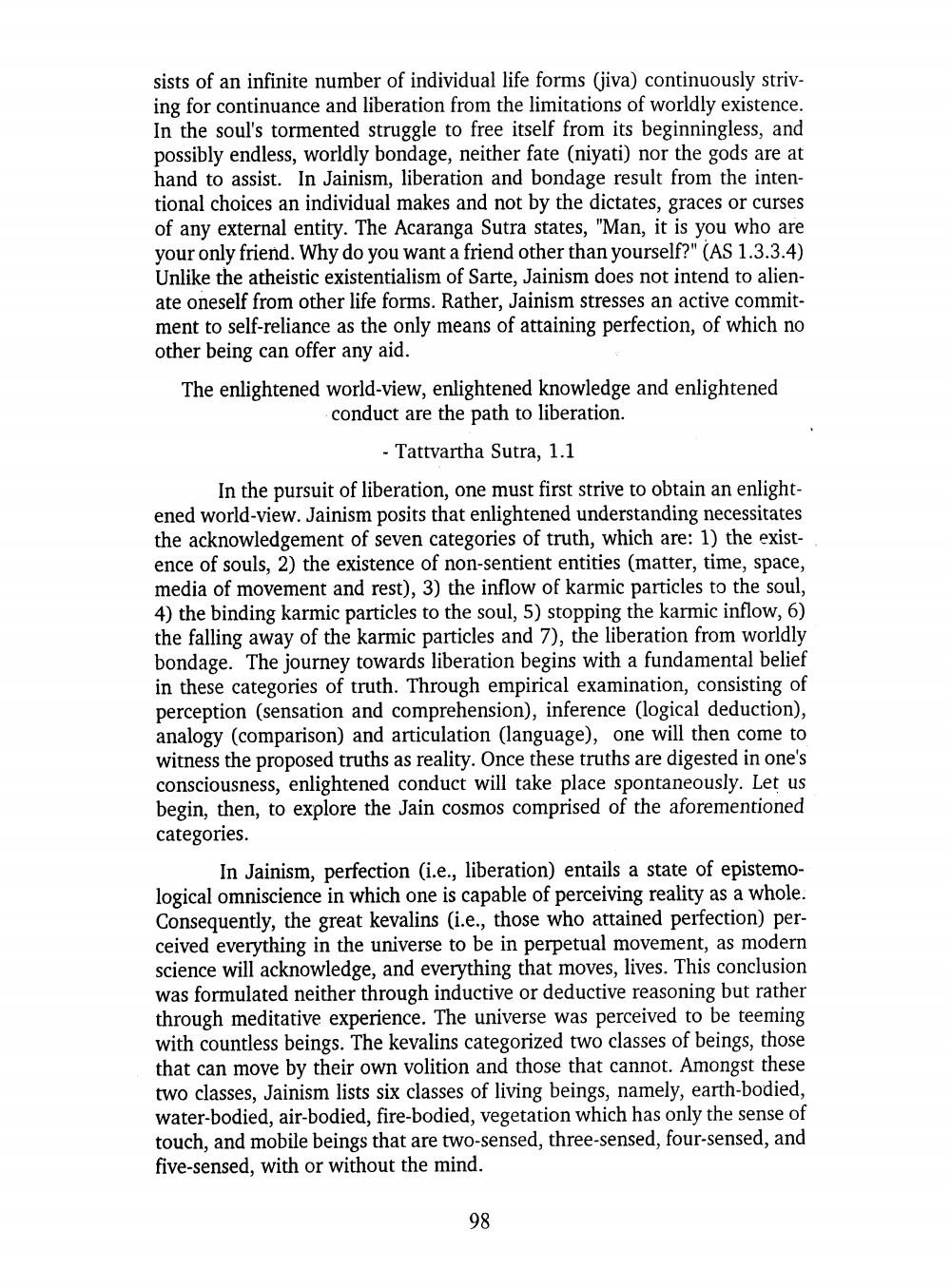________________
sists of an infinite number of individual life forms (jiva) continuously striving for continuance and liberation from the limitations of worldly existence. In the soul's tormented struggle to free itself from its beginningless, and possibly endless, worldly bondage, neither fate (niyati) nor the gods are at hand to assist. In Jainism, liberation and bondage result from the intentional choices an individual makes and not by the dictates, graces or curses of any external entity. The Acaranga Sutra states, "Man, it is you who are your only friend. Why do you want a friend other than yourself?" (AS 1.3.3.4) Unlike the atheistic existentialism of Sarte, Jainism does not intend to alienate oneself from other life forms. Rather, Jainism stresses an active commitment to self-reliance as the only means of attaining perfection, of which no other being can offer any aid. The enlightened world-view, enlightened knowledge and enlightened
conduct are the path to liberation.
- Tattvartha Sutra, 1.1 In the pursuit of liberation, one must first strive to obtain an enlightened world-view. Jainism posits that enlightened understanding necessitates the acknowledgement of seven categories of truth, which are: 1) the existence of souls, 2) the existence of non-sentient entities (matter, time, space, media of movement and rest), 3) the inflow of karmic particles to the soul, 4) the binding karmic particles to the soul, 5) stopping the karmic inflow, 6) the falling away of the karmic particles and 7), the liberation from worldly bondage. The journey towards liberation begins with a fundamental belief in these categories of truth. Through empirical examination, consisting of perception (sensation and comprehension), inference (logical deduction), analogy (comparison) and articulation (language), one will then come to witness the proposed truths as reality. Once these truths are digested in one's consciousness, enlightened conduct will take place spontaneously. Let us begin, then, to explore the Jain cosmos comprised of the aforementioned categories.
In Jainism, perfection (i.e., liberation) entails a state of epistemological omniscience in which one is capable of perceiving reality as a whole. Consequently, the great kevalins (i.e., those who attained perfection) perceived everything in the universe to be in perpetual movement, as modern science will acknowledge, and everything that moves, lives. This conclusion was formulated neither through inductive or deductive reasoning but rather through meditative experience. The universe was perceived to be teeming with countless beings. The kevalins categorized two classes of beings, those that can move by their own volition and those that cannot. Amongst these two classes, Jainism lists six classes of living beings, namely, earth-bodied, water-bodied, air-bodied, fire-bodied, vegetation which has only the sense of touch, and mobile beings that are two-sensed, three-sensed, four-sensed, and five-sensed, with or without the mind.
98




